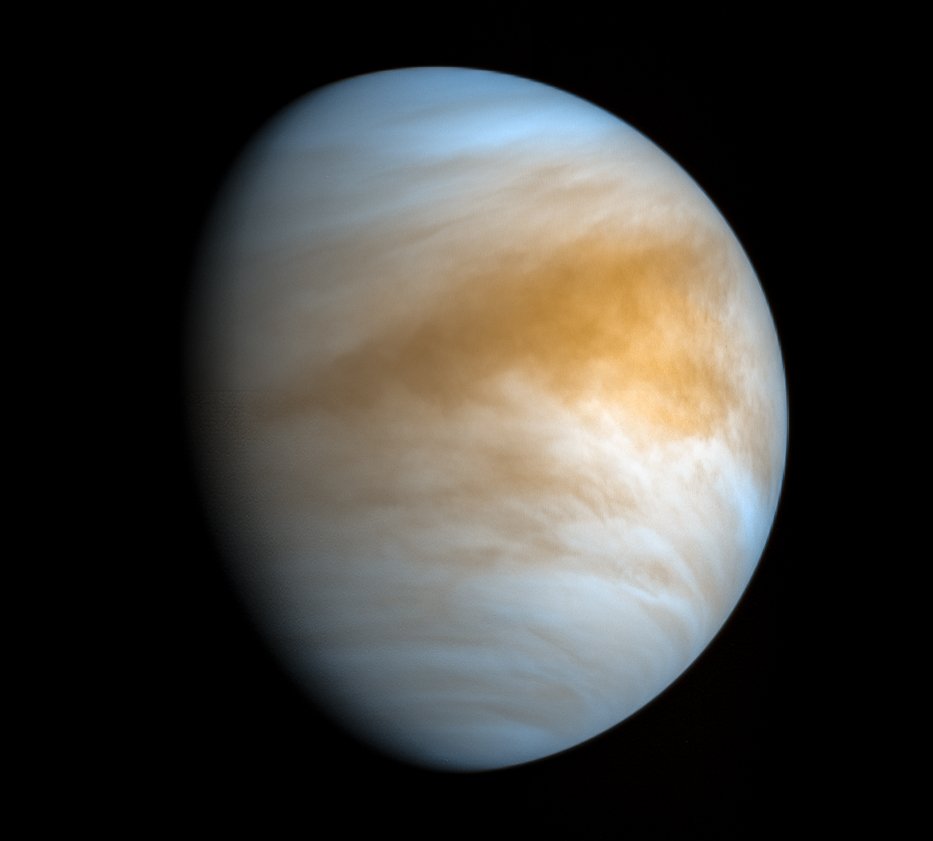PHOSPHINE DEVELOPMENTS ON VENUS RAISE MANY QUESTIONS

Venus is likely the closest thing to the biblical description of hell: a hot, violent, destructive, inhospitable horror of a planet. It is similar in size to Earth, but due to a runaway greenhouse effect has an atmosphere 92 times thicker than that of the surface of the Earth, and an average surface temperature hot enough to melt lead. On top of that, it rains sulfuric acid there. When the USSR sent a lander there, technicians only gave it a mere 30 minutes’ life expectancy. However, this little lander-that-could managed to hang on for 2 hours and 7 minutes before being simultaneously crushed and melted by Venus’s catastrophic conditions.
While the planet was named for the roman goddess of beauty, science has truly revealed her for what she is – hell in the night sky. Astonishingly enough, however, scientists have recently found evidence for life on Venus. Step aside, Mars! What scientists are typically looking for in the search for alien life are what’s called biosignatures. These come in many forms; for instance, methane, a gas that decays very quickly. Having a large amount of a gas that decays quickly could indicate that there are a lot of things on a planet, that are, for lack of a better term, doing a lot of farting. Or a lot of bacteria breaking things down. Either way, something living is breaking something down and creating new things, although these biosignatures are often explained away quickly by geologic or astrophysical processes. One of these biosignatures is called phosphine, and it is the big fish: It’s a molecule strongly associated with the chemistry of life that has few methods of production outside of life, especially on rocky planets such as Venus. And now, astronomers have found phosphine on Venus.
The implications of the announcement made Sept. 14 in the Nature Astronomy journal are massive; so massive, in fact, that they prompted NASA administrator Jim Bridenstine to respond on Twitter with the message, “It’s time to prioritize Venus.” To date, the discovery of phosphine on Venus might be the biggest development in the case for locating alien life. Phosphine has already been detected in Jupiter and Saturn, as under extreme conditions it can be produced by simply jamming hydrogen and phosphorus together – proving that, in fact, the material can be produced in large quantities without life.
However, Jupiter and Saturn are gaseous, and researchers say that rocky planets such as Venus and Earth simply do not have the energy to create phosphine in large quantities without the aid of living things. Even on Earth, the creation of phosphine is very mysterious. It is often found where anaerobic life forms exist, but we have never actually seen anaerobic life forms produce it, a subtle yet important distinction that might prompt further research into the subject. Phosphine is also very easily broken down by light, which means to have a lot of it, there needs to be an abundant source. And, Venus has a lot of it: 5-to-20 parts per billion, in its atmosphere.
At first glance, that might seem very small, but for perspective that is a few thousand times more than what is found here on Earth. With the initial data we have now, many experts can see little to no explanation for the presence of this molecule aside from anaerobic life. It cannot be understated that more research is needed. Venus has long been neglected in being studied. As it stands, the only current mission studying the planet is one, lonesome Japanese orbiter, called Akatsuki. As a result, the picture we have of its atmosphere is very incomplete. Its upper atmosphere is where we think life could exist, needing to live in tiny droplets of water and sulphuric acid, suspended in the air.
To call it extreme would be an understatement. Still, we currently have no explanation for phosphine on Venus, other than life. As the saying goes, it is never aliens, until it is aliens. This apparent discovery is momentous, out of the blue, and quite frankly, mind-blowing. It will certainly prompt more research there. We live in a stunningly huge universe, and we have only begun to scratch the surface of what even our closest planetary neighbor has to offer. We have a lot to learn, a lot of big questions to answer, and this discovery has opened the most recent chapter in answering the question of whether or not we are alone in the vast black expanse we call space. With renewed focus and effort, maybe we can finally find that first bit of tiny microbial life, in a place where we thought it least possible.

Leave a comment